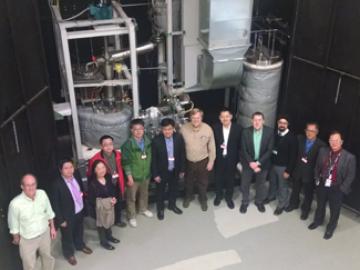Filter News
Area of Research
- (-) Computer Science (1)
- (-) Reactor Technology (1)
- Advanced Manufacturing (6)
- Biological Systems (6)
- Biology and Soft Matter (4)
- Building Technologies (5)
- Chemical and Engineering Materials (4)
- Chemistry and Physics at Interfaces (11)
- Clean Energy (60)
- Climate and Environmental Systems (4)
- Computational Biology (1)
- Computational Chemistry (5)
- Computational Engineering (1)
- Earth Sciences (1)
- Energy Frontier Research Centers (13)
- Fuel Cycle Science and Technology (1)
- Functional Materials for Energy (14)
- Fusion Energy (1)
- Geographic Information Science and Technology (3)
- Isotope Development and Production (1)
- Materials (70)
- Materials for Computing (7)
- Materials Synthesis from Atoms to Systems (13)
- Materials Under Extremes (11)
- Neutron Data Analysis and Visualization (4)
- Neutron Science (16)
- Nuclear Science and Technology (11)
- Nuclear Systems Technology (1)
- Quantum Condensed Matter (4)
- Renewable Energy (1)
- Sensors and Controls (1)
- Supercomputing (35)
- Transportation Systems (5)
News Type
Media Contacts

Representatives from the Oak Ridge National Laboratory (ORNL) and the Shanghai Institute of Applied Physics (SINAP) are meeting at ORNL this week as part of an agreement between the two institutions to work together on the advancement

Researchers at the Department of Energy’s Oak Ridge National Laboratory got a surprise when they built a highly ordered lattice by layering thin films containing lanthanum, strontium, oxygen and iron. Although each layer had an intrinsically nonpolar (symmetric) distribution of electrical charges, the lattice had an asymmetric distribution of charges. The charge asymmetry creates an extra “switch” that brings new functionalities to materials when “flipped” by external stimuli such as electric fields or mechanical strain. This makes polar materials useful for devices such as sensors and actuators.




